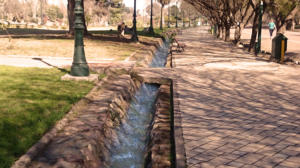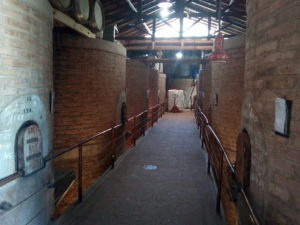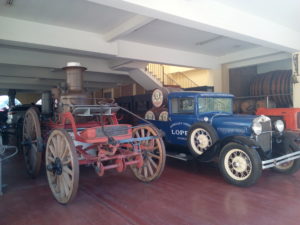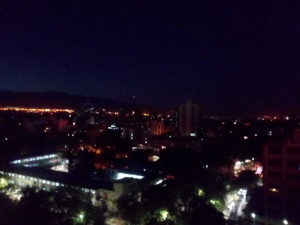My journey continues through Argentina and I am now landing in Mendoza, a city historically known for its wine that rivals our French wines and where Malbec is a regional pride.
I only had to stay 3 days here, but the sympathy of Diego-my host Couchsurfing-, the relaxed and pleasant atmosphere and the good vibes that prevail in this city have made me stay here and have fully imbued with its charm!
Mendoza is much more than a “wine factory”, this city is a landmark in terms of history, architecture and culture in Argentina!
Let’s start with a little history tour
Mendoza was founded on March 2, 1.561 by a Spanish captain, Pedro Del Castillo, on the current square that bears his name.
Exactly 3 centuries later, in 1861, the city was ravaged by a powerful earthquake that almost completely destroyed it.
It is redesigned in 1.863 by a French topographer – Jules Balloffet, whose work lasted for 30 years.
The city is dotted by trees everywhere. Indeed, they are around 100,000 to garnish it, equitably distributed between the city center and the Parque General San Martín (more than 500 species). Mendoza is thus a ciudad bosque, a forest city.
Mendoza is located in the most seismic region of Argentina. The city has adapted to it, with the proper construction techniques, but also with the sacrifice of destroying some old buildings (no matter how pretty they are) and replacing them with new and stronger buildings.
The wine, a culture that became worship
Aaaahh Mendoza and its wine, an old love story that lasts!
And this story owes its origin and its durability to the ancestral huarpe heritage.
The production of the wine requires 600 mm of rain per year to properly irrigate the vineyards and ensure a good harvest.
But the city is a desert, where the rainfall is of the order of 200 mm annual!
It is the Huarpes, ancient indigenous peoples who introduced the acequias (term of Arab origin – الساقية), this system of canals in all streets to bring water from the snow falling on the mountains.
These acequias allow today to irrigate tens of thousands of trees in the city, ponds, large wine plantations, etc.
In the city, they are also used to drain water from the occasional but abundant summer rains.

People accustomed to good French, Spanish, and Tunisian wines, and who have a certain requirement will not be disappointed!
Here in Mendoza, we drink (at least) as well as we eat!

There are more than a 1,000 vineyards and cellars in Mendoza, all more beautiful than the others. I visited three; I would come back with pleasure to see the others! 😀
The grapes are various: Cabernet Sauvignon, Syrah, Merlot, Pinot Noir, and of course the Malbec!


In Mendoza they produce a lot of Malbec, and a good one!!
However, my discovery is the Cabernet Franc, a variety with a French name but I’ve never heard about it, and it accompanies perfectly your parilla, thank you Diego !! 🙂
What is nice, it’s that the city tries to highlight this wine culture by organizing very often events around the wine and its tasting. Whether in a bar where an oenologist describes the wines that you taste or on the roof of the municipality to have a panoramic view of the entire city, these events are lays/always enjoyable!

Cheers… and Pura Vida !! ☺

About tips
- The tourism office provides the map of the city, information about transport but most of all the cultural agenda of the month; you’ll find all the events information you need!
- There is very cool free walking tours, the guides are nice, just give them a tip at the end (about $ 100 – $ 150 in general). One of the tours proposed by the municipality even ends with a wine degustation.
- The entrance to the Bodega Lopez is free; we go by tram (24 pesos for the 2 ways in February 2018), buying and reloading a Mendoza Red Bus card. At the exit, you can buy one or more bottles; there is a bottle for every preference and every budget!
- The entry to the Wine Museum + La Bodega La Rural costs 200 pesos (8 €), but this sum can be used to buy wine at the exit
- The wine route is in Maípu, you can get there by bus 171. On arrival, it is possible to rent a bike for 150 pesos (6 €) per day. I rented mine at Mr Hugo’s, a few meters from the bus station
